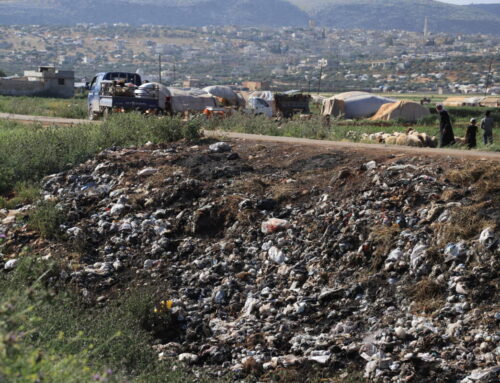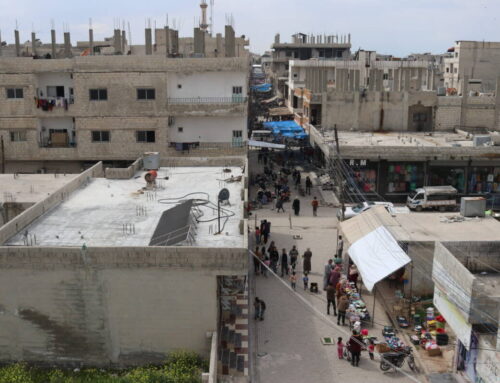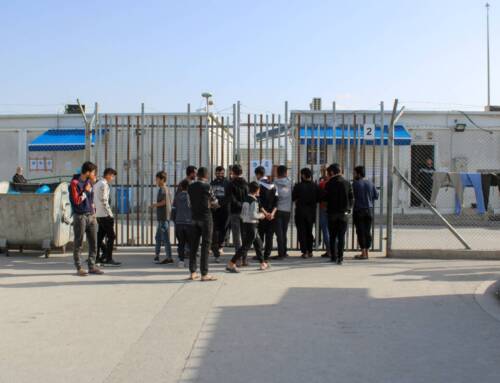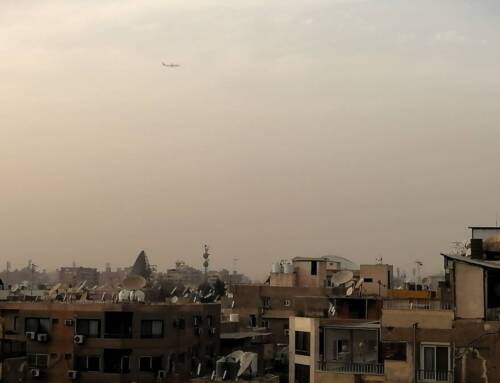Hundreds wait in line in blockaded West Ghouta for medicine that isn’t there
AMMAN: Hundreds of residents in one regime-blockaded town 12km southwest of […]
12 April 2016
AMMAN: Hundreds of residents in one regime-blockaded town 12km southwest of central Damascus queued up outside the only medical center for treatment, but most were turned away due to a lack of “the most basic medical supplies,” a journalist and resident of Moadhamiyet a-Sham told Syria Direct on Monday.
“This is a scene that is repeated every day,” Muhammad Nour, one of the journalists who posted pictures of the line outside the medical center on Facebook on Sunday, told Syria Direct Monday.
Umm Hussam, a widow with six children, brought her 14-year-old asthmatic son to the medical center in Moadhamiyet on Sunday, hoping to get him treatment. But after waiting hours in line, a doctor informed her that they didn’t have the oxygen necessary to help him.
“I looked down at my child. I saw how he was suffering and fading before my eyes and I couldn’t give him anything,” Umm Hussam told Syria Direct on Monday.
Um Hussam cannot provide her children with “the most basic life necessities,” She said, adding that she has started to “wish for death for myself and my children in one fell swoop just so we can finally be free from the specter of slow death that haunts us is our town.”
The line outside Moadhamiyet’s only medical clinic on Sunday. Photo courtesy of Muhammad Nour.
Siege, truce, then siege again
Once famous in Syria for its olive groves, Moadhamiyet a-Sham became known as the “starving suburb,” where residents survived on unripe olives and watery grass soup.
Moadhamiyet was the first Syrian town to enter into a truce with the regime in late 2013, after enduring an airtight, year-long encirclement and a devastating chemical attack.
But despite the 2013 truce, it quickly became clear to residents that the regime was not holding up its end of the deal, failing to allow in food and medicine, which continues to this day.
Late last year, the regime re-imposed the blockade on the town’s 45,000 residents, most of whom are women, children and elderly individuals. Later that year, in November, the Syrian army and its allies began a new campaign to drive a wedge between the paths connecting Moadhamiyet a-Sham and neighboring Darayya. Last month, the regime was finally able to cut off the two towns.
Heavy aerial bombardment of Moadhamiyet a-Sham and repeated attempts to storm it accompanied that campaign, culminating on January 30 when warplanes dropped 66 barrel bombs.
The internationally brokered “cessation of hostilities” that went into effect in late February stipulated the “sustained delivery of assistance” to seven blockaded areas and towns in Syria including Moadhamiyet a-Sham. But only two aid shipments have arrived. The second one did not include medicine or medical supplies.
“The medical supplies that arrived [in February] were generally good in terms of quality, but supplies have of course dwindled since then,” Dr. Rashid al-Wazaan, a surgeon at the medical center in Moadhamiyet a-Sham, told Syria Direct on Monday.
Even though the center is equipped with plenty of medical devices, a lack of supplies and maintenance means most of them just sit idle in the clinic, said al-Wazaan.
What the medical center has left are three kinds of antibiotics and paracetetamol, the painkiller in over-the-counter medicines such as Tylenol and Panadol, said al-Wazaan. The medical staff lacks the morphine to ease the pain of terminally ill patients.
Between 1,600 and 1,900 residents of Moadhamiyet a-Sham visit the local medical center each week. Photo courtesy of Abu Kanaan a-Dimashqi.
Like Umm Hussam’s asthmatic young son, Ahmad, Moadhamiyet residents commonly suffer from respiratory illnesses related to smoke inhalation from wood and plastic that people relied on to get through the cold winter months, said the doctor.
So far, 25 residents have died due to a lack of food and medicine after the re-imposition of the regime’s siege in late 2015, said al-Wazaan, adding that many of them were children.
One was a two-year-old infant named Khalid who came in with severe malnutrition. Despite the doctor and his colleagues’ efforts, they didn’t have the necessary supplies to save him. They watched the toddler helplessly as he stopped breathing, his heart rate slowed and he died.
“We couldn’t do anything for him.”









